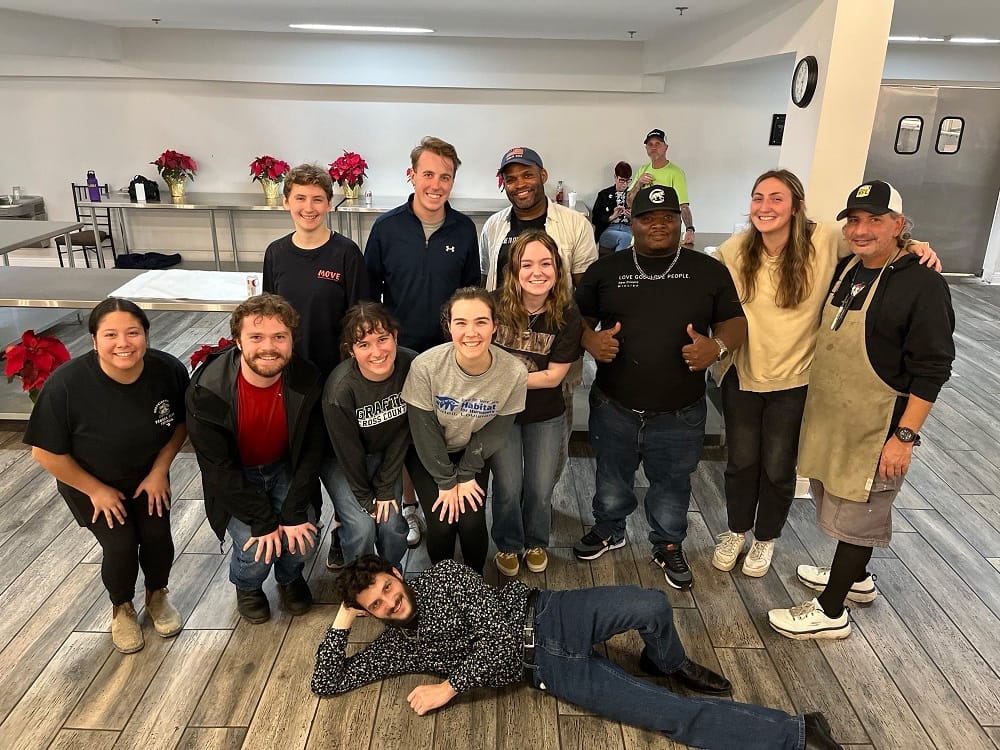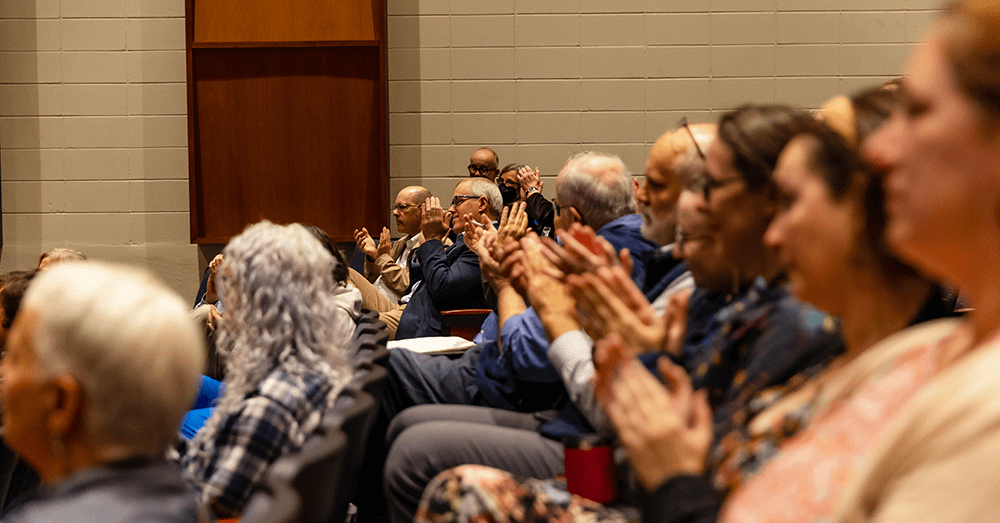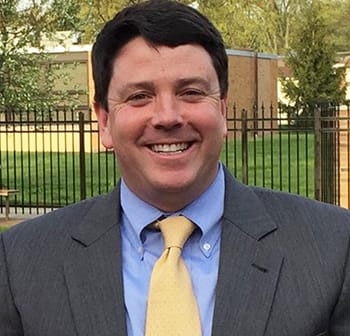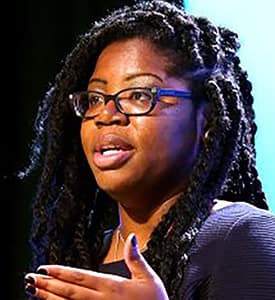Mass, speaker, lunch evoke spirit of St. Edmund
In his homily for the Saint Edmund Feast Day Mass late Wednesday afternoon in the Chapel, Edmundite Fr. Richard Berube reflected on the strange-seeming “connections” wrought by history and mysterious providence. He made the case that a holy figure from the 13th Century still “works” for the College in ways that are impossible to understand, yet important and bracing for the faithful to believe.
“To celebrate the feast of Edmund as patron saint is to rejoice in a connection that still exists between him and us,” he said, suggesting that our not being able to explain that mysterious connection did not diminish it. “We are surrounded by mystery. And that means that we, as educators and students, are caught up in a paradox, for the goal of the education we pursue is not explanation so much as the wisdom and the humility to recognize explanation’s limits.”
The Mass was part of several events this week commemorating the Nov. 16 feast of the saint who is the namesake of the Society of Saint Edmund, founding religious order of Saint Michael’s College in 1904. The Society, popularly called “Edmundites,” still has a majority of its members in residence on campus. True to their signature charism of hospitality, they treated the entire College community to a free lunch Wednesday afternoon in the Alliot dining hall, with pleasant jazz background music provided by Campus Music Minister Jerome Monachino and his ensemble.
Reflecting the Edmundites’ historical commitment to education that springs from the gifts of Edmund in this area, Edward Mahoney, religious studies professor and director of the Edmundite Center for Faith and Culture, invited Jocelyn Wogan-Browne of Fordham University, a scholarly authority on Edmund, to present the annual Saint Edmund Lecture Tuesday evening, November 15, in Dion Family Student Center Roy Room.
Wogan-Browne, who is professor of literature and holds the Thomas F.X and Theresa Mullarkey Chair in Literature at Fordham, addressed the influence of medieval women in promulgating the writings of Saint Edmund. In particular, she explored how women in medieval England fostered Saint Edmund’s spirituality in literary and artistic forms through the publication and use of the Book of Hours, which were prayer books for the laity and used for devotional practice. Saint Edmund’s Mirror of the Church became a very popular and helpful guide for lay spirituality extending into the 15th century, in large measure because women of nobility and women in nunneries found Edmund’s guidance and admonitions regarding the spiritual life to be sympathetic to their own spiritual journeys, as she demonstrated with examples and PowerPoint images of historical documents.
Professor Wogan-Browne was the third scholar in as many year to speak on Edmund’s Mirror and its impact on medieval spirituality. The lecture series is sponsored by the Saint Edmund Initiative under the auspices of the Edmundite Center for Faith and Culture. This new scholarly initiative is intended to revitalize interest in the thought of Saint Edmund of Abingdon, both at Saint Michael’s College and among scholars internationally.
History, connections and intercession
Fr. Berube started his Wednesday evening homily with an entertaining musing based on a PBS series of recent years called Connections – a show that would speculate on what might have happened (or not) based on various contingencies in history – say, the fate of certain philosophers, emperors or crusaders. “Strange connections happen, and so history turns its many corners,” Fr. Berube said, reviewing the historical connections to which Saint Michael’s College owes its existence:
“Had it not been for the reforming zeal of certain Medieval Benedictine monks, there would not have been founded a Cistercian Abbey of Pontigny, and that Abbey could not have been the site of St. Edmund’s tomb,” the homilist said. “Had it not been for Edmund’s troubles with the English king, Edmund would not have been in Pontigny. And had Edmund not been enshrined there, the small community founded by Fr. Muard would not have taken the name ‘Society of St. Edmund.’ Then again, had it not been for the French Revolution, Fr. Muard would not have founded his community. And members of that community could not have been called to restore the basilica and establish a school at Mont-St-Michel, and our own St. Michael’s would not be here. So, you see, we owe it all, in a way, to zealous twelfth-century monks, King Henry III, and Marie Antoinette!”
Within a faith-vision, he said, “we cannot say that all the connections which have brought us together here today have been mere blind chance – say rather: connections in a story unfolding in the plan of a favoring God … We confess faith in a God whose abiding care for us has been at work in the many various turnings and connections of our history … a God whose abiding care has reached out and reaches out to us in people who for us are God’s angels and ministers.”
To be honest, he said, Edmund “really played no earthly part” in the College’s nor the Society’s heritage or direct founding, given that Edmund lived in the 1200s and the Society was founded in the 1800s with the purpose of keeping alive his rich legacy in an age of rising secularism. So, “It is not as ancestor or as model or as teacher that Edmund principally has been given to us, but as intercessor, as a special instrument of the loving mystery that embraces us,” he said. “And so in celebrating St. Edmund’s feast we speak not only of him, but to him. St. Edmund pray for us.”





